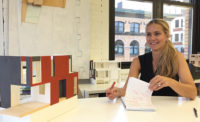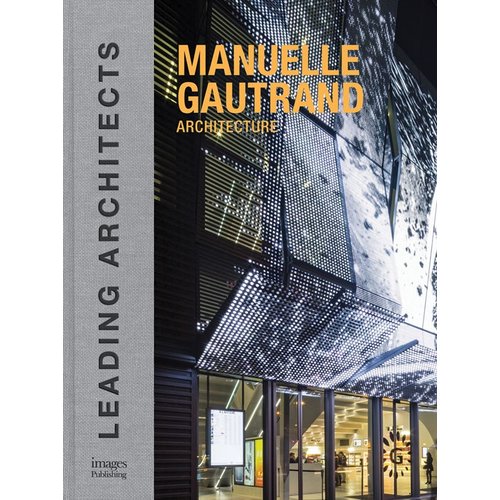| Ennead | Gould Evans | KPF | Marmol Radziner | Mithun | Page |
|---|---|---|---|---|---|
| New York | Kansas City, Missouri + Other Locations | New York + Other Locations | Los Angeles + San Francisco | Seattle and San Francisco | Washington, D.C. + Other Locations |
| Founded in 1963 | Founded in 1974 | Founded in 1976 | Founded in 1989 | Founded in 1949 | Founded in 1898 |
| 190 employees | 153 employees | 558 employees | 220 employees | 159 employees | 479 employees |
In his 2005 book on globalization, Thomas Friedman famously declared the world flat. For many large firms, the author’s theory was already fact then, and it may be even more relevant now. Clients today have access to virtually any firm in the world; with the proper resources, any firm can work anywhere. As a result, the world feels undeniably small. “We all find that everybody is everywhere nowadays,” says Richard Olcott, a partner at Ennead (formerly Polshek Partnership), a 190-person firm with offices in New York and Shanghai. “You can be in Kansas somewhere, turn around, and Norman Foster is standing right behind you. Everywhere we go, we see a lot of the same faces.”
For large firms (those with 100 to 600 employees), it’s a world of promise, opportunity, and uncertainty. A strong global economy and the ability to access it have been countered by fierce competition, low fees, and shifting business models, as the evolution of digital technology reshapes the entire profession. Firms with high head counts and deep pools of talent are ripe for creative reinvention, but vulnerable as well. “I’d put the 100-to-200-person firm in the high-risk category right now,” says Frank Stasiowski, president of PSMJ Resources, a management-consulting firm serving the architecture and engineering (A&E) industry. “We’re busier than ever with mergers and acquisitions in that range,” he says. “The big, publicly traded firms such as Stantec, AECOM, and Jacobs need access to design resources and markets, so they’re buying them, and they tell us they don’t want to talk to anybody less than 100 people.”
And digital technology, of course, keeps advancing. BIM has been revolutionary, but its current capabilities will look quaint in no time. The Virtual Reality goggles increasingly employed to dazzle clients may, before long, look like the clunky portable phones of the pre–Steve Jobs era (surely something seamless, immersive, and goggle-free awaits us in the not-so-distant future). “In terms of technology, we’re probably in the first inning of a 10-inning game,” as Stasiowski puts it.
Still, BIM and rapidly improving simulation and visualization tools allow more design work to happen at the front end of projects, with multiple iterations and explorations the new norm. “We’re working on what will be the tallest office building in Austin [Texas] right now,” says Laurence Speck, a senior principal at Page, a 479-person A&E firm with six offices in the U.S. and one in Dubai, “and the clients—because we can show them—want to see every single corner of their building rendered.” These enhanced views, however, come with some risk. “Expectations get higher and higher,” Olcott says. “But you have to be really careful to make sure you get paid for that stuff.”
Getting fairly paid has never been easy. But two events in the recent past—one specific, the other ongoing—have placed even more financial pressure on firms of all sizes. The first was the Great Recession, which saw business crater, firms close, and fees drop precipitously. Sadly, the aftereffects of that upheaval are still being felt. “Fees really haven’t rebounded since the recession,” Speck says. “They’re still incredibly low and competitive, especially in market sectors like higher education.”
At the same time, the tech revolution’s efficiencies can be a double-edged sword: they miraculously streamline the process but have begun eroding one of the once-lucrative tasks of the architecture office: construction drawings (CDs). “The traditional models for how fees are generated don’t really correspond to the current processes,” says Brendan Connolly, a partner at Mithun, a 159-person firm with offices in Seattle and San Francisco. “With these BIM tools, there’s a much heavier front-end concentration of design time and thinking, so we’re often in a pressured situation, early on, to get a lot done with less fee that we need to, quote unquote, ‘make up at the end.’ ”
Indeed, despite changes in the delivery process, many firms have not significantly altered their fee structures. “This industry hasn’t yet had its Uber moment,” says Tony Rohr, national managing partner of Gould Evans, a 153-person firm headquartered in Kansas City, Missouri, with offices in San Francisco, Phoenix, New Orleans, and Lawrence, Kansas. Today, 200 options for the design of a 75,000-square-foot science lab can be explored overnight by setting up an algorithm. And more automation—especially with the emergence of AI—is on the horizon. “Does anybody think we’re done?” asks Rohr. “I don’t want to be the firm that boasts, ‘We do the best CDs in the world.’ That’s a road to nowhere, man.”
The loss of billable hours dedicated to the creation of CDs—which is somewhat analogous to the newspaper industry’s losing classified ads—appears inevitable, and will require a major rethinking of the traditional business model. Marmol Radziner, the Los Angeles–based design-build firm, offers one alternative. Founded in 1989, with 220 employees today, it has practiced nontraditionally for nearly its entire existence. Because the firm initially lacked access to high-quality contractors, it began building its projects.
Over time, that activity has morphed into a multitude of services and revenue streams: architecture (mostly residential); construction (other projects as well as their own); landscape; interiors (including workplace and hospitality); fabrication (the firm employs 45 people in a 17,000-square-foot shop); furniture; jewelry; and, most recently, real-estate development. From both an economic and aesthetic perspective, design-build is the ultimate win-win. Firms get paid as contractors to control the process—and the quality—of the work. “However, I wouldn’t say every architect should do it,” says firm cofounder Leo Marmol. “Many architects don’t want to suffer the drudgery, stress, and pain of being a builder. But we feel we’re better architects because we build.”
While it has no plans to abandon the core business of architecture, Gould Evans is more than willing to expand the definition of what constitutes the firm’s services. A decade ago, the office launched Canary, a now-profitable graphic design and branding consultancy. It has begun soliciting and funding start-up ideas pitched by employees, including web-based tools for property management and continuing education. “We looked at ourselves and said, ‘OK—if, down the road, we’re not doing construction drawings, then what is the value of what we do?’ ” says Trudi Hummel, principal and board chair of Gould Evans. “It’s in the front end—the design thinking, the engagement with clients, the identification, and then the solving of, business issues and problems upstream in the process.” Other entrepreneurial initiatives and new fees based on construction efficiencies and building performance will be needed, since the squeeze on traditional billing is likely to continue.
Large firms do possess a number of advantages inherent in size: the capacity to conduct original (and potentially lucrative) research into the development of building products and digital tools; wide expertise; vast portfolios of previous work; healthy marketing budgets; global contacts; and pockets deep enough to accept lower fees in hopes of entering new markets. But, inside the design studio, the world is flatter. “Almost any size firm can be an international firm,” says James von Klemperer, president and design principal of KPF, a 558-person firm with offices in New York, London, Shanghai, Hong Kong, Seoul, and Abu Dhabi.
The reverse is also true. Big firms—which are essentially dozens of small and constantly morphing teams operating under a single umbrella—can be every bit as nimble as small ones. To that end, KPF has a “war room” in its New York office, papered from floor to ceiling with spreadsheets, dedicated solely to pairing available and appropriate talent to projects worldwide. It’s part art, part science. “If you want to design an airport with a $20 billion budget, you can’t do it by being an atelier of bohemian architects,” von Klemperer says. “You have to cross that, hybridize it, with people who believe in marching orders and charts. It’s both sides of the brain. But without the bohemian side, you just can’t do the most interesting work.”
One of the greatest challenges vexing big firms is diversity. Large practices can no longer hide behind a curtain of mystery about how they hire and promote: the issue is central to a new generation of architects, is vital to recruiting—and is becoming an important touchstone for many clients. “We now get questions in project interviews, ‘What’s your firm policy on diversity?’ ” says Anne Torney, a partner at Mithun, “ ‘What does your leadership look like?’ ” Among the six firms explored in this article, Mithun stands out on approaching gender equity: 44 percent of their partners and principals are women. KPF recently doubled the number of women directors (now six, out of 30 total), but all seven senior partners at Page are men. Like any good-sized company, each of these firms have formal sexual-harassment policies in place, though many women who work in those offices would probably agree that deeply embedded sexism is harder to address without changes in the culture and greater equity in leadership.
Even more difficult to address, however, is racial diversity and the alarming absence of African Americans in the profession. (The Directory of African American Architects currently lists just 2,200 licensed architects in its database.) “You can say you want diversity all you want,” Speck says, “but I chaired a search committee at the University of Texas School of Architecture for a technology position. We did an extensive search, including some minority organizations: we got zero African American architects, out of 80 applicants.”
Without more aggressive efforts to remedy the inequalities in the profession, large firms will increasingly seem out of step. But all of these challenges—a reliance on construction documents for profits, hourly or lump-sum payments, diversity, even firm size as a determining factor for jobs—are all holdovers from the last century. Stasiowski, who is currently working on a book about the state of the profession in the year 2030, predicts that the large-firm business model “will be subject to all kinds of gyrations in the next 10 to 15 years,” but that new ways forward will be forged. “The younger professionals—who grew up in the digital age and are now burdened by this antique, time-card mentality—are going to be the ones who break out of the larger firms and create new ways to do business.”










